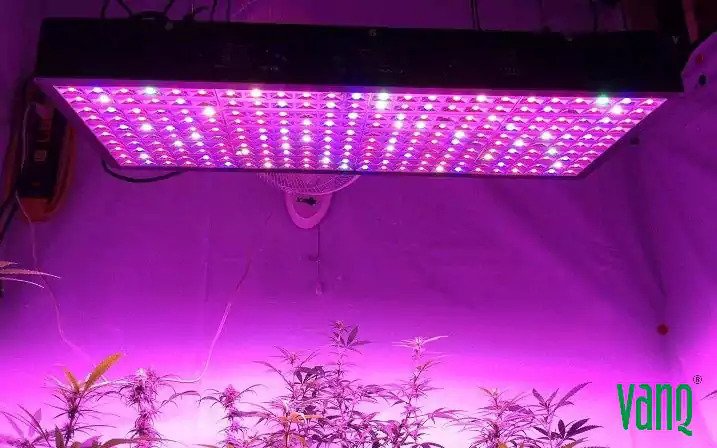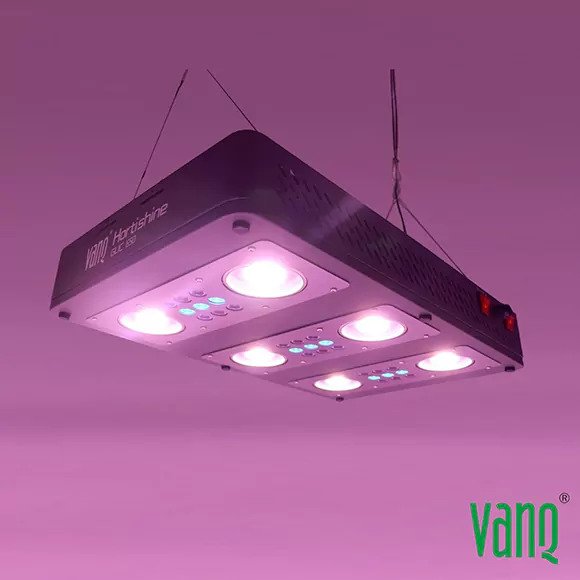Cannabis LED grow lights
Cannabis, like any other plant, requires light to flourish. The cannabis plant does well both indoors and outdoors. If you are conducting your cultivation indoors, then there are chances you have heard of cannabis LED grow lights.
In this article, you will learn about the types of LED grow lights and their advantages.
Types of LED grow lights
Currently, there are three types of LED lights. Each of them has advantages and disadvantages. When selecting a LED light for your cannabis plants, it is important to understand each type and its pros.
Standard LED (PURPLE)

These are the first LED lights to be introduced and the most widely used lights till now. They have so many medium wattage LEDs with approximately 3-5 watts per LED in a compact fixture.
They are sometimes called purple because they have blue and red bulbs that combine their lights to emit purple hue. The primary advantage of the standard LED is its price. And their disadvantage is on the low output which leads to low yields.
COB LED

COB is an abbreviation for "chip on board". This light contains hundreds of LEDs on a small board. They are more efficient than the standard LED with white intense light resembling light of the natural sun.
Their main advantage is their good penetration power into the plant. This results in high yields which can be compared to that of HID lamps. Cost is their main disadvantage. They are relatively expensive when compared to "purple" lights.
Spread-Style LED
Unlike COB, this contains a large board with hundreds of small LEDs arranged on it. There are also rack-style LEDs and spider-style LEDs.
The primary advantage of the Spread-Style LED is that they are energy-efficient as compared to the rest. You end up getting enough energy for the wattage you are using. Cost is their primary disadvantage. When compared to the other LEDs, they are relatively expensive.
Is there Full spectrum LED Grow Lights?
When discussing LEDs, what are full-spectrum LED grow lights? Is a common question that comes up. You may also be wondering what these lights look like. The fact is, there is no full spectrum LED grow lights. This is a marketing term referring to electromagnetic radiation from the UV to the infrared wavebands.
These lights are common since they resemble the natural light from the sun. Initially, the sun was the only real full-spectrum light. Later when most lights started mimicking the light from the sun, the term became popular.
Influence of LEDs on Cannabis Plants
The weather is sometimes unpredictable; it can either be cloudy or sunny depending on the day. This ends up affecting the plants. LEDs ensure your plants have constant and regulated light.
Plants use lights to make food through photosynthesis. LEDs enable the plant to make food continuously. The plant easily detects the light through the detectors on the leaves. Through this, the plants become bigger and better with high yields.
Advantages of LED Lights
As aforementioned, LED lights offer your plant numerous benefits. Below are the main advantages and the reasons why choose LEDs over other lights;
More Energy-efficient
LEDs use less electricity to produce high-intensity lights for your plants. LED light fixtures also have a longer life span. A good LED can serve up to several years before requiring maintenance.
Run Cool
When compared to HID, LEDs produce less heat. You will, therefore, require no cooling system to maintain optimal temperatures. It is even more advantageous if you are leaving in a warmer climate.
Reduce Watering Schedule
Since there is less heat produced, the soil remains moist long enough. This gives you a break from your watering schedule.
If you were initially using HID, it is easy to notice the difference. In case you water your plants at the same rate as when using HID, your plants will be over-watered.
Fewer Nutrients Required
Watering plants comes along with nutrients. Mostly you mix the nutrients with the water. By lowering your watering schedule, you in turn lower the number of nutrients you supply.
You will end up saving on the cash used to purchase nutrients. It is natural that when the plants need less water, they also need fewer nutrients.
Bottom Line
LEDs have many advantages when compared to the disadvantages. Yes, there are a few disadvantages like cost. Some LEDs are relatively expensive. However, when you compare the yield, it is worth using the lights.
Cannabis LED grow lights are the modern way to go. For maximum yields, try any of the lights.























